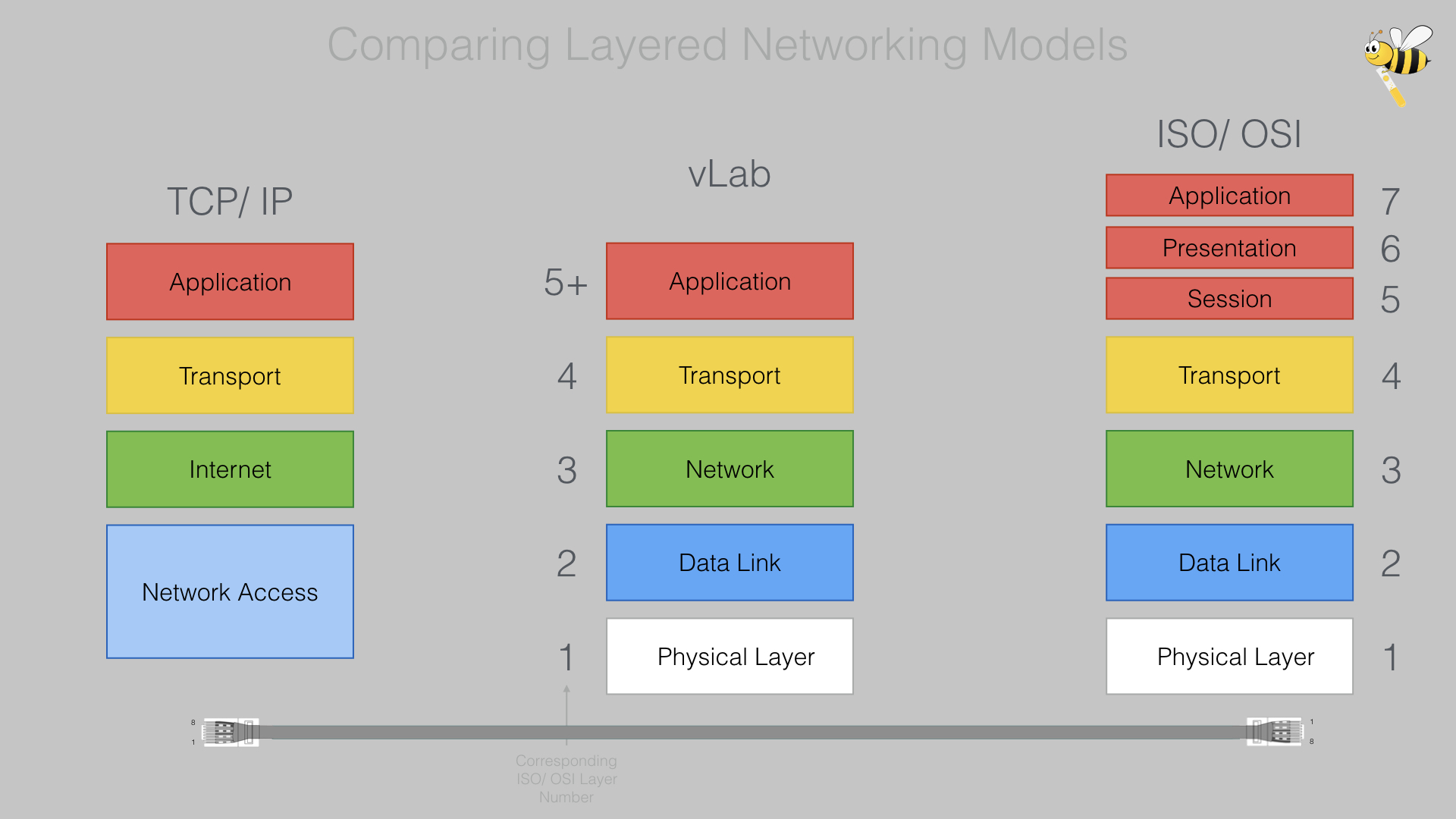The 5+ Layers of the Internet
Historically two major layered network architectures emerged as reference models known today: The ISO/OSI and the TCP/IP models.
The TCP/IP model was the first approach to structure network communication using 4 different layers. The ISO/OSI model followed later, offering a even more detailed model with 7 different layers.
For the iLabX – The Internet Masterclass course we developed a third network model, which we call the vLab model. The vLab model uses the same Layers as the ISO/OSI model, but summarizes Layers 5-7 as Layer 5+, This fits to nowadays use of the ISO/OSI model, where most people don’t distinguish between those top 3 layers.
The three different Layered Networking Models
All models follow similar concepts, but with a different granularity. The following image depicts all three models.

Before we go into the details of all Layers, let’s have a look at the obvious differences of the three models:
While the vLab and the ISO/OSI model both have a Physical Layer (Layer 1) and a Data Link Layer (Layer 2), the TCP/IP model summarizes both of those layers into one larger layer, the Network Access Layer. On Layer 1 information is encoded as signals and sent over a transportation medium. On Layer 2 directly connected hosts can be addressed e.g. using MAC addresses with Ethernet.
Layer 3 is basically identical for all models, TCP/IP just refers to it as the Internet Layer while the other two models use the term Network Layer. In the Internet there is basically just one relevant protocol on that layer, the Internet Protocol (IP) in its two variants IPv4 and IPv6.
Layer 4 is called the Transport layer and as Layer 3 identical for all models. Layer 4 is used to address specific applications on a host using Ports. Example Protocols are e.g. TCP or UDP.
Layer 5+ of the vLab communication model contains the applications with all their individual logic. While both the vlab and the TCP/IP model only use one layer for applications, the ISO/OSI model differentiates between session, presentation and application layers. Example protocols include e.g. DNS or HTTP.
Summary & Outlook
In this post we had a brief look at three different networking models (TCP/IP, vLab and ISO/OSI) and summarized their differences and similarities. We also got a small teaser for each Layer of the vLab model.
In the upcoming blog posts we will go into some more detail for each of the Layers, including purpose, typical protocols and more. If you got curious and are not enrolled yet, head over to iLabX – The Internet Masterclass on edX and enroll for free to get the full pack for each layer!





One thought on “The 5+ Layers of the Internet”